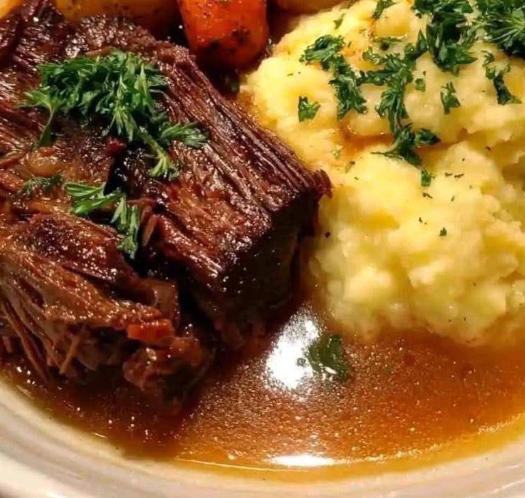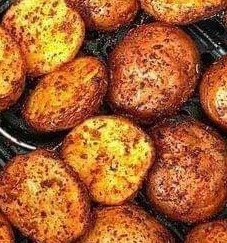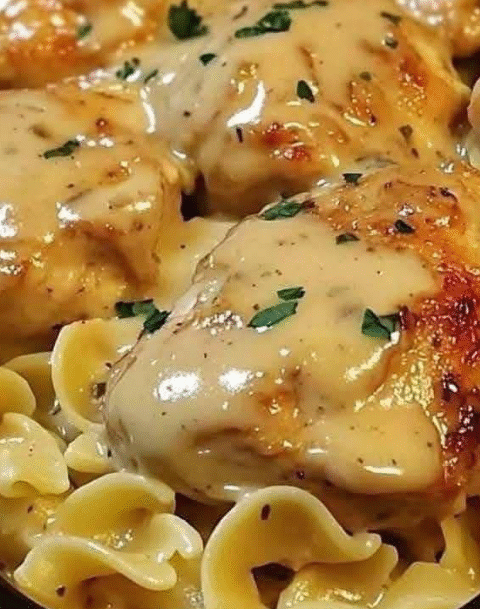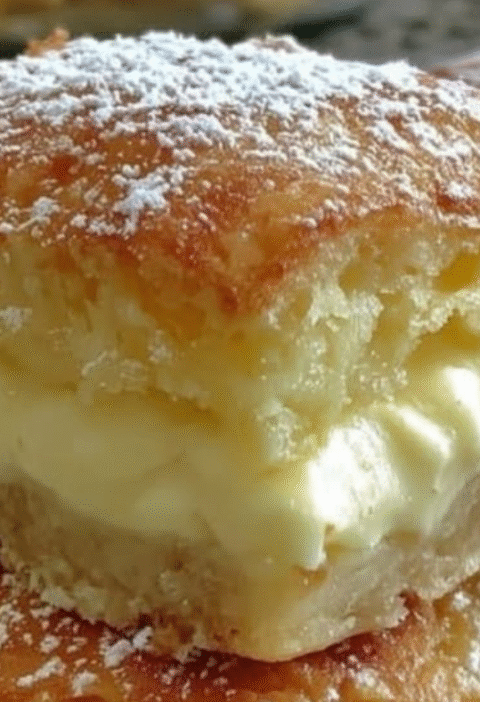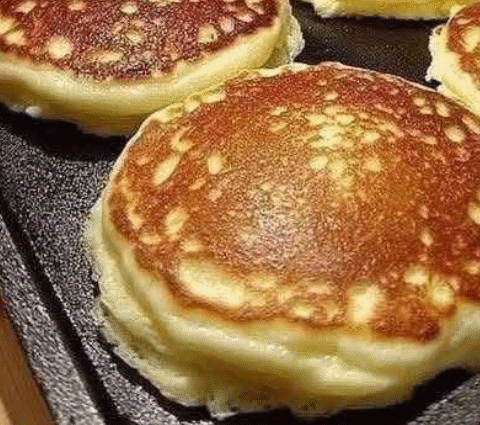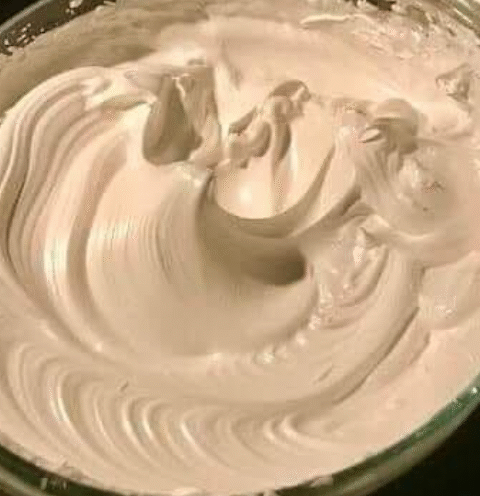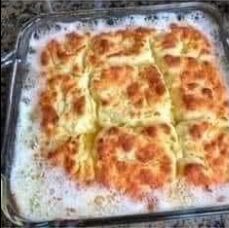Lemon Garlic Butter Chicken with Creamy Parmesan Pasta 🍋🧄🍝
Bright, buttery, garlicky, and creamy — this dish brings together juicy chicken breasts cooked in a lemon garlic butter sauce, paired with pasta tossed in a silky Parmesan cream sauce. It’s elegant enough for guests yet straightforward enough for a weeknight. Here’s your complete guide.
Why This Recipe Works
Combining chicken and pasta is classic, but the twist is in layering flavors: you sear the chicken in garlic butter and lemon, then use the same pan to build the sauce so you capture all those browned bits. The creamy Parmesan pasta rounds it out, making each bite rich, zesty, and comforting.
Recipes similar to this appear across food blogs, such as “Lemon Garlic Butter Chicken with Parmesan Linguine.” :contentReference[oaicite:0]{index=0}
What You’ll Find in This Guide
- A full ingredient list (US & metric) and notes on role of each item
- Step‑by‑step instructions, with timing and techniques
- Chef tips to avoid pitfalls
- Variation ideas to customize to your tastes
- Nutrition estimates and health notes
- Storage, reheating, and food safety advice
- 10 FAQs to help you troubleshoot
- Serving & plating suggestions
Ingredients & Their Roles
Base Ingredients (US / Imperial)
- 2 boneless, skinless chicken breasts
- 1 tablespoon olive oil
- 2 tablespoons unsalted butter
- 3 garlic cloves, minced
- Juice and zest of 1 lemon
- Salt & freshly ground black pepper
- 8 oz pasta (linguine, fettuccine, or your choice)
- 1/2 cup heavy cream (or half‑and‑half for a lighter version)
- 3/4 cup freshly grated Parmesan cheese
- 1/2 cup chicken broth (optional, for thinning or deglazing)
- Fresh parsley or herbs for garnish
- Reserved pasta cooking water (a splash to loosen sauce)
Approximate Metric Conversions
- Chicken breasts: ~400–500 g total (2 pieces)
- Olive oil: ~15 mL
- Butter: ~28 g (2 tbsp)
- Garlic: ~3 cloves (~9–12 g)
- Lemon juice & zest: ~1 lemon (juice ~30–45 mL)
- Pasta: ~225 g
- Heavy cream: ~120 mL
- Parmesan: ~75 g
- Chicken broth: ~120 mL
- Parsley / herbs: as needed
Role & Why Each Part Matters
- The **chicken breasts** are the protein, offering a neutral base for absorbing flavors.
- **Olive oil + butter** create a flavorful fat mix. Butter lends richness; oil helps prevent burning.
- **Garlic** is the aromatic backbone, giving depth and savory punch.
- **Lemon juice & zest** bring brightness and cut through the richness, balancing the dish.
- **Salt & pepper** are essential for seasoning and bringing out flavors.
- **Pasta** provides structure and a vessel for sauce.
- **Heavy cream** gives the sauce body and creaminess; lighter substitutions will be thinner.
- **Parmesan cheese** adds umami, salt, and creaminess when melted into the sauce.
- **Chicken broth** (if used) helps deglaze the pan and thin the sauce without watering it down.
- **Pasta water** is a trick to loosen sauce and help it cling (due to starch in the water).
- **Parsley / herbs** add freshness, color, and a final flavor lift.
Step‑by‑Step Instructions
1. Prep & Cook Pasta
- Bring a large pot of salted water to a boil. Cook the pasta until **al dente** (a little firm to the bite). Reserve about ½ cup of pasta water before draining.
- Drain and set the pasta aside. You will finish it in the sauce later.
2. Sear the Chicken
- Pat the chicken breasts dry, season both sides with salt and pepper (and optional paprika or Italian seasoning if desired).
- In a skillet over medium-high heat, heat olive oil + 1 tablespoon butter until melted and hot but not smoking.
- Add the chicken breasts. Cook ~4–6 minutes per side (depending on thickness), until golden brown and nearly cooked through (internal temp ~160°F / 71 °C). Avoid overcrowding; you can do in batches.
- Remove the chicken from the pan and set aside; tent with foil to keep warm.
3. Build the Lemon Garlic Butter Sauce
- In the same skillet (don’t clean it — use the browned bits), melt the remaining tablespoon butter.
- Add the minced garlic and sauté ~30 seconds until fragrant (don’t let it burn).
- Add lemon zest and lemon juice. Scrape up browned bits (fond) from the pan for flavor.
- If desired, add chicken broth now to deglaze and give extra liquid base.
- Bring to a gentle simmer so everything combines.
4. Make the Creamy Parmesan Pasta Sauce
- Lower heat to medium. Stir in heavy cream (or half‑and‑half) into the lemon garlic butter sauce.
- Gradually stir in freshly grated Parmesan cheese, stirring constantly until smooth. Don’t let sauce boil vigorously, as cheese may separate.
- If sauce is too thick, add some reserved pasta water bit by bit to reach desired consistency; if too thin, simmer briefly to reduce slightly.
- Season with salt, pepper, and (optional) additional garlic powder or herbs to taste.
5. Combine Pasta, Chicken & Sauce
- Add the cooked pasta into the skillet with the sauce, tossing gently to coat every strand.
- Return the chicken breasts to the skillet, nestling them into the pasta and sauce. Simmer for 1–2 minutes so flavors meld and chicken finishes cooking (to safe internal temp ~165°F / 74 °C).
- Garnish with chopped parsley or fresh herbs, fresh cracked pepper, and extra Parmesan if wanted.
6. Serve & Enjoy
Serve while warm, with additional sauce spooned over top. Optionally add lemon wedges on the side for extra zing.
Chef Tips, Tricks & Common Pitfalls
- Use freshly grated Parmesan: It melts better and gives smooth texture. Pre‑grated often has fillers that can yield gritty sauce.
- Don’t overheat cheese: Add off the heat or over gentle heat—high heat can cause the sauce to separate.
- Reserve pasta water: The starch in it helps the sauce bind to pasta without thinning flavor. (Common trick in many pasta recipes) :contentReference[oaicite:1]{index=1}
- Don’t overcrowd the chicken pan: If you trap steam, you’ll lose browning. Work in batches if needed.
- Let chicken rest briefly: After searing, resting ensures juices redistribute and chicken stays moist.
- Adjust consistency carefully: Add small amounts of pasta water to loosen; reduce by simmering to thicken.
- Balance lemon: Zest gives aroma; juice gives acidity. Adjust based on your taste — too much lemon can overpower the creaminess.
- Warm your dairy: Use room‑temperature cream or temper it slowly to avoid shocking the sauce.
Variations & Custom Twists
Lighter Version
Use half & half or whole milk instead of full heavy cream. The sauce will be lighter. Some recipes do this as a lower-fat alternative. :contentReference[oaicite:2]{index=2}
Add Vegetables
Fold in steamed or sautéed vegetables like spinach, broccoli, peas, or cherry tomatoes at the end. They add color, nutrition, and freshness — a common suggestion in similar recipes. :contentReference[oaicite:3]{index=3}
Use Chicken Thighs or Tenders
Swap breasts for boneless thighs (more forgiving) or tenderloins (faster cooking). Adjust searing time accordingly.
Spicy Kick
Add red pepper flakes, a dash of cayenne, or crushed chili for heat. This pairs well with lemon-garlic flavors.
Herb Infusion
Add fresh thyme, basil, or oregano into the sauce near the end for herbal brightness.
White Wine or Shallots
After searing chicken, deglaze with a splash of white wine (½ cup) before adding cream for extra depth. You can also sauté a minced shallot along with garlic.
Nutrition & Health Considerations
Here’s a rough estimate per serving (assuming 4 servings). Use your ingredient labels for precise values.
| Nutrient | Estimate per Serving |
|---|---|
| Calories | ~ 500‑650 kcal |
| Protein | ~ 30‑40 g |
| Total Fat | ~ 20‑30 g |
| Saturated Fat | ~ 8‑15 g |
| Carbohydrates | ~ 40‑60 g (from pasta, small from sauce) |
| Fiber | ~ 1‑3 g |
| Sugars | ~ 1‑3 g (mainly from milk or sauce) |
| Sodium | Moderate to high (from broth, cheese, salt) |
Health Notes & Tips:
- This dish is rich, so balance with lighter sides (salad, steamed veggies).
- Use reduced-sodium broth and moderate salt because Parmesan and cheese add sodium already.
- Use moderate portions of cream; you could reduce or omit for a lighter version.
- Increasing vegetables reduces calorie density and increases fiber.
Storage, Reheating & Food Safety
Storage
- Allow the dish to cool to room temperature (no more than ~2 hours out) then store in an airtight container in the refrigerator.
- Consume within **3–4 days** for best quality.
- Freezing is possible, but creamy sauces may separate or become grainy upon thawing. If freezing, freeze chicken and pasta separately without garnish, and thaw slowly. Reheat gently and stir in a bit of cream or milk to smooth.
Reheating
- Reheat gently in a skillet over low to medium heat, stirring and adding a splash of cream or milk to refresh texture.
- Microwave in short intervals, stirring between bursts and possibly adding liquid to loosen sauce.
Food Safety Tips
- Always cook chicken to internal temperature of **165 °F (74 °C)**.
- Store leftovers promptly and don’t leave food out too long.
- Use clean utensils and surfaces — avoid cross‑contamination from raw chicken.
Troubleshooting & Common Issues
- Sauce breaks or is grainy: Avoid high heat when adding cheese; remove pan from heat before stirring in Parmesan. Add cheese gradually. This is a known issue in cream‑cheese sauces. :contentReference[oaicite:4]{index=4}
- Chicken overcooked / dry: Don’t sear too long; finish cooking in sauce briefly; rest the meat.
- Too thick sauce: Thin with reserved pasta water or broth.
- Too thin / watery sauce: Simmer (uncovered) to reduce, or add more cheese slowly.
- Pasta clumping or sticking: Toss with sauce immediately, and stir occasionally. Use a wide pan and ensure enough liquid.
10 FAQs (Your Questions Answered)
1. Can I cut the chicken into pieces rather than use whole breasts?
Yes — that speeds cooking and gives more surface area for the lemon garlic butter flavor. Many versions do this (chicken bites) in recipes like “Lemon Garlic Butter Chicken with Parmesan Linguine.” :contentReference[oaicite:5]{index=5}
2. Can I skip the heavy cream?
You can reduce or omit it and rely more on broth + butter + Parmesan, though the sauce will be lighter and less creamy. Many recipes offer a lighter variation. :contentReference[oaicite:6]{index=6}
3. What pasta shape works best?
Long pastas like linguine, fettuccine, or spaghetti are common. But you can use shorter types (penne, fusilli) — just ensure enough sauce to coat.
4. How do I prevent the cheese from clumping or curdling?
Add cheese off the heat or on low heat, stirring constantly. Don’t let the sauce boil hard. Parmesan clumps more easily under high heat. This is often cautioned in creamy pasta recipes. :contentReference[oaicite:7]{index=7}
5. Can I use chicken thighs instead?
Yes, boneless thighs are more forgiving and stay juicy. They may need a bit more sear time before adding sauce.
6. How do I make this gluten‑free?
Use gluten-free pasta. Ensure any broth or finely grated cheeses are gluten-free. Butter, cream, and basic seasonings are naturally gluten-free.
7. Can I make this ahead and reheat?
You can cook the components ahead, but pasta can absorb sauce and become dry. It’s best assembled fresh. For reheating, add cream or milk when warming to refresh sauce.
8. What sides go well with this dish?
Green salad, garlic bread, roasted vegetables (asparagus, broccoli), or steamed greens balance the richness. Some versions suggest adding vegetables into the pasta itself. :contentReference[oaicite:8]{index=8}
9. Can I use bottled lemon juice instead of fresh?
Fresh lemon juice and zest yield better flavor and brightness. Bottled can work in a pinch, but it may be less vibrant.
10. Why reserve pasta water?
The starchy water helps loosen and bind the sauce to pasta without diluting flavor. It’s widely used in creamy pasta cooking techniques. :contentReference[oaicite:9]{index=9}
Serving & Presentation Ideas
- Serve on warmed plates so the sauce stays silky and doesn’t thicken too quickly.
- Slice the chicken before placing it over pasta to create height and texture contrast.
- Garnish with fresh parsley, a twist of lemon zest, and extra Parmesan.
- Offer lemon wedges on the side for extra zing.
- Pair with a fresh green salad or steamed vegetables for color and balance.
- Add a side of crusty bread or garlic toast to mop up any leftover sauce.
Conclusion & Final Thoughts
Your **Lemon Garlic Butter Chicken with Creamy Parmesan Pasta** is a luxe yet accessible dish. The interplay of brightness (lemon), richness (butter, cream, Parmesan), garlic, and tender chicken make it a show-stopping meal. Use the chef tips, watch your heat, and adjust consistency as needed. Let me know if you’d like a **printable recipe card**, a metric-only version, or a shorter “kitchen cheat sheet”—I’d be happy to prepare it!
